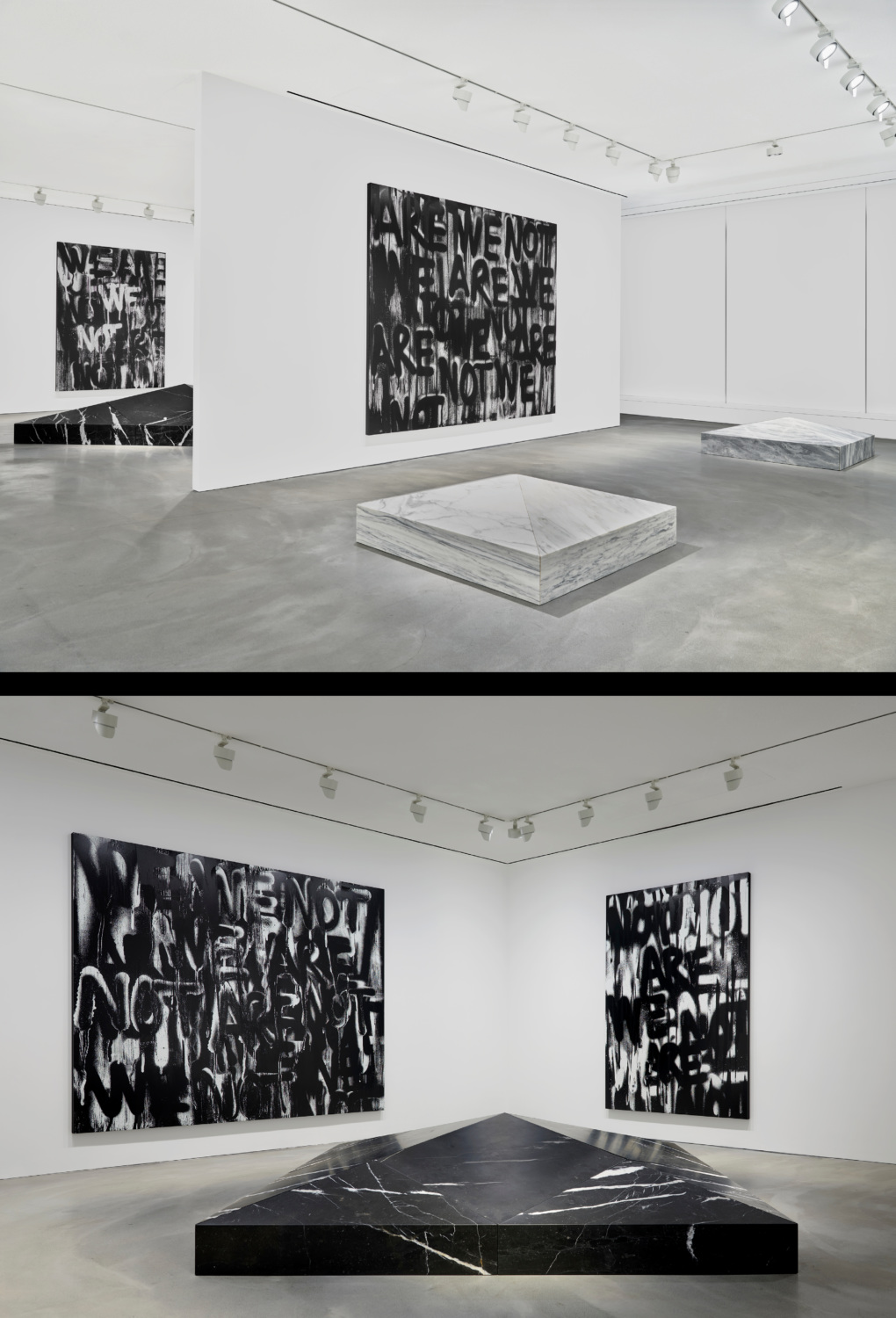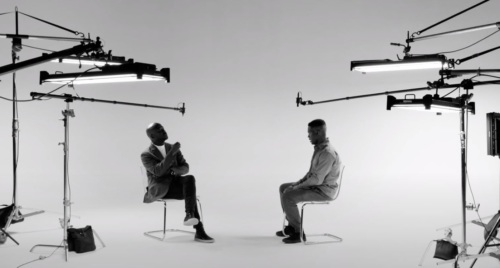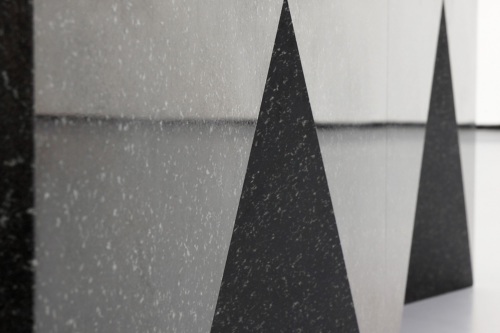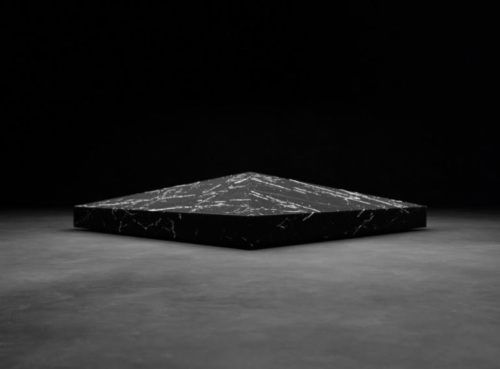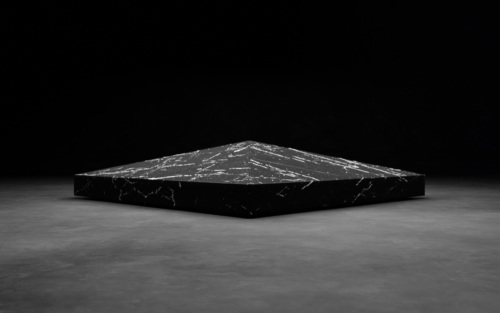
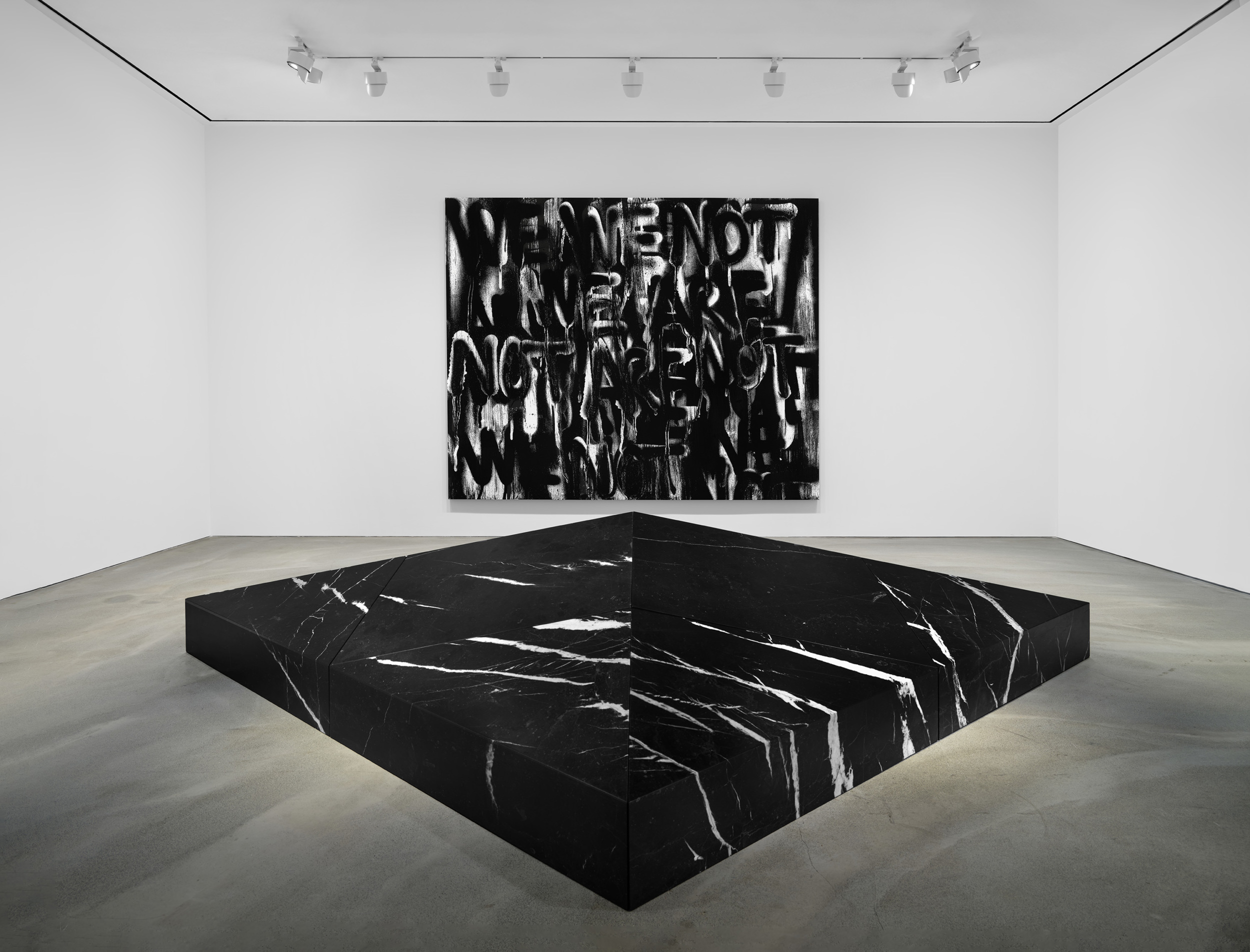
David Adjaye Adam Pendleton
Pace Gallery, Hong Kong
- Status
2021 - Category
Exhibitions & Installations - Institution/Venue
Pace Gallery, Hong Kong - Collaborating Artist
Adam Pendleton - On View
May 18 – June 30, 2021 - Stone Fabricator
Quarra Stone Company
Technical Info +
I wanted to create a different reading of a language that one could also see within Adam’s work—a geological language. It’s a piece of earth compressed with records of climate and the imprints of our habitation in the world.
This collaboration between artist Adam Pendleton and Sir David Adjaye OBE which is an exploration on the parameters of a visual and spatial lexicon in dialogue with questions of language, identity and monumentality. Coinciding with Art Basel Hong Kong, the exhibition on view at Pace Gallery Hong Kong, bears the continuity of an ongoing conversation between both art and architecture, the artist and the architect. Through a sustained and multifaceted engagement with painting, as well as the sculptural abilities of breaking down and reconstructing elemental forms, the conversation of abstraction and representation takes place in the works to reveal the question of how form supports space, perception and a dialogue between the two.
This is seen in the geological process of marble formation in Adjaye’s modular geometric sculpture which takes the form of pyramids, one of the earliest and primary forms of sculpture in humankind. The stone in the marble formation creates a type of stone scripting, a language broken down in the passage of geologic time formed through a long history of compression which speaks towards Pendleton’s paintings. The painting’s–acting like a graffiti–in conversation with the sculpture relays form and language as well as forms of language that speak to metamorphosis and the requirement of abstraction embedded in becoming.
The form of the pyramid itself, composed of four individual elements coming together through a variety of orientations, evoke the notion of possibility and the contingency embedded within creation. The solidity of the sculpture bears the weight and gravity of creation whilst its dynamic parts display the possibility of becoming through various perspectives and directionalities. Echoing the semantics of nature where processes are never singular but contain within them dispersed networks of dynamic parts, the sculpture reveals in both form and marble mineral materiality, a multiplicity that accedes an identity and an awareness into the radically different time scales of life. The work brings together Adjaye’s broader architectural practice in which he interrogates the western canon through the movement into ancient African forms and vernacular traditions such as that of the pyramids constructed in Ancient Kemet-Egypt. Through the return to the vernacular, the interplay and re-interpreted materials of memory and history become architectural tools, bringing to the surface a temporal dynamism. In the past-sense, the pyramid form re-emerges; in the present-sense one is able to work with its disaggregated potential; and in the future-sense the form exists as a document of and for desire where the collective and the individual become connected with and through it. In this framework of relationality, Adjaye’s sculpture echoes his architectural practice, displaying a geometry of relations that demonstrates the weight of time within space; reveals the depth of memory in materiality; and presents a possibility through form as a blueprint into the question of ‘collectivity’.
